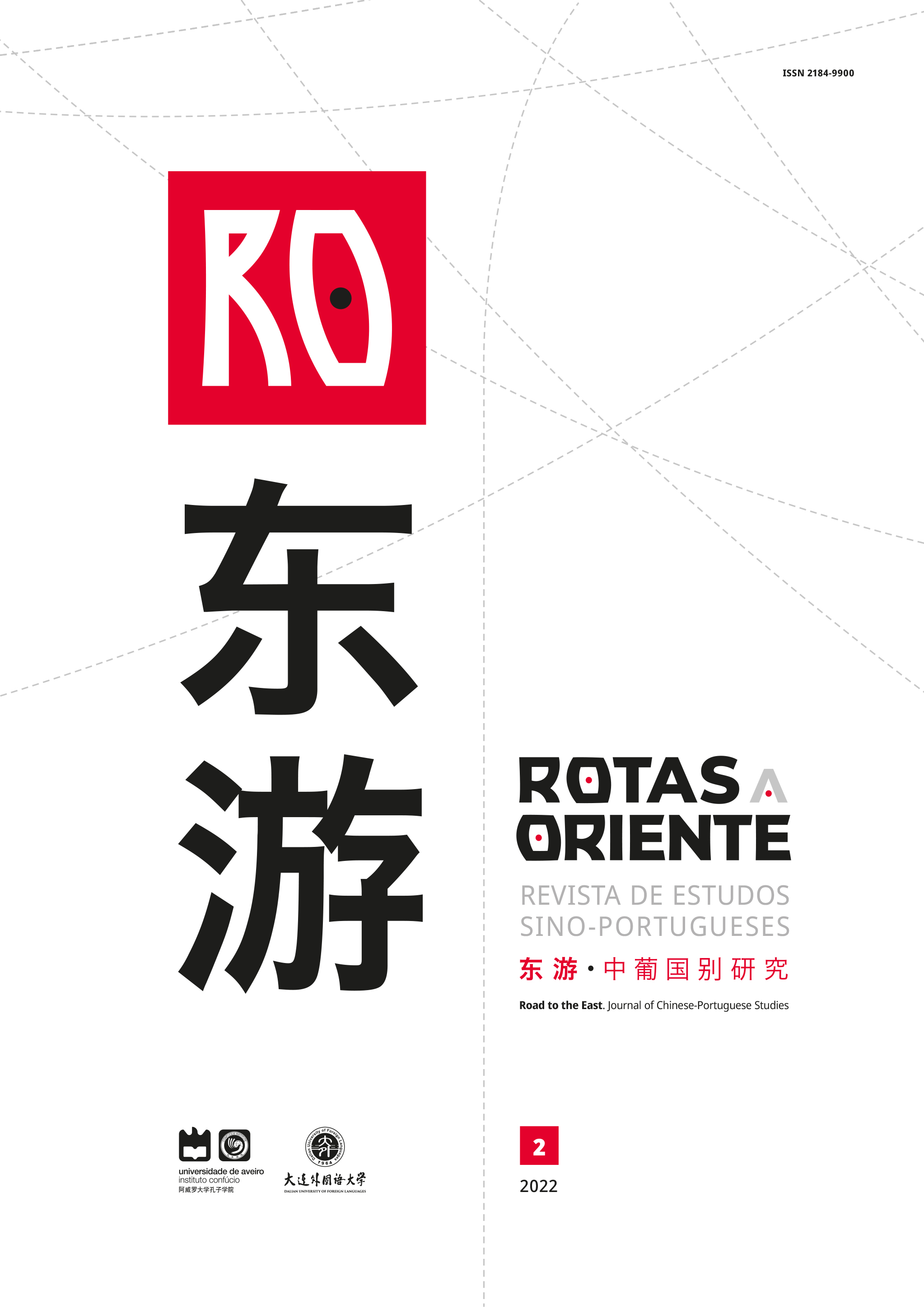Economia Circular para Cidades Saudáveis
Resumo
Os locais onde as pessoas vivem e trabalham, consomem e desperdiçam, têm um papel fundamental na transição para a economia circular. A crise da covid-19 destacou o caráter insustentável de determinadas tendências ambientais e sociais, e levou a reconsiderar os atuais padrões de produção e consumo, motivando a recuperação verde. Um dos aspetos mais relevantes prende-se com a governação e o território, em especial as zonas urbanas onde viverá mais de 80 por cento da população em 2050. Novas fontes de energia, tecnologias mais limpas e aumentar a resiliência urbana através das funções e serviços dos ecossistemas, são apenas exemplos de como melhorar o ambiente, combater as alterações climáticas, aumentar a circularidade da economia e promover a saúde humana. Usando o exemplo da cidade do Porto, os resultados contribuíram para o conhecimento da estrutura urbana, podendo ser de grande importância para os decisores políticos no combate aos impactos das alterações climáticas nas cidades.
Referências
Amorim, J. H., Rodrigues, V., Tavares, R., Valente, C., & Borrego, C. (2013). CFD modelling of the aerodynamic effect of trees on urban air pollution dispersion. Science of the Total Environment, 461-462, 541-551.
Borrego, C., Tchepel, O., Costa, A. M, Amorim, J. H., & Miranda, A. I. (2003). Emission and dispersion modelling of Lisbon air quality at local scale. Atmospheric Environment, 37, 5197-5205.
Borrego, C., Monteiro, A., Martins, H., Ferreira, J., Fernandes, A. P., Rafael, S., Miranda, A. I., Guevara, M., & Baldasano, J.M. (2015). Air quality plan for ozone: an urgent need for North Portugal. Air quality, Atmosphere and Health, 9, 447-460.
Brondizio, E. S., Settele, J., Díaz, S., Ngo, H. T. (Eds.) (2019). Global assessment report on biodiversity and ecosystem services of the Intergovernmental Science-Policy Platform on Biodiversity and Ecosystem Services (IPBES). Bonn, Germany.
Buccolieri, R., Salim, S. M., Leo, L. S., Di Sabatino, S., Chan, A., Lelpo, P., Gennaro, G., & Gromke C. (2011). Analysis of local scale tree–atmosphere interaction on pollutant concentration in idealized street canyons and application to a real urban junction. Atmospheric Environment, 45, 1702-1713.
Calado, R., Nogueira, P. J., Paixão, E. J., Botelho, J., Carreira, M., & Falcão, J. M. (2004). A onda de calor de Agosto de 2003 e os efeitos sobre a mortalidade da população portuguesa. Revista Portuguesa de Saúde Pública, 22(2), 7-20.
Carvalho, D., Martins, H., Marta-Almeida, M., Rocha, A., & Borrego, C. (2017). Urban resilience to future urban heat waves under a climate change scenario: A case study for Porto urban area (Portugal). Urban Climate, 19, 1-27.
Ceballos, G., Ehrlich, P., & Rodolfo, D. (2017). Biological annihilation via the ongoing sixth mass extinction signaled by vertebrate population losses and declines. Proceedings of the National Academy of Sciences of the United States of America – PNAS 25, 114 (30).
Copernicus EU (2021). Copernicus Climate Change Service (C3S) annual report. ECMWF, EU, 2021. EC – European Commission SWD 298 final (2020). Kick-starting the journey towards a climate-neutral Europe by 2050. EU Climate Action Progress Report 2020.
EC – European Commission (2021). European Green Deal: Striving to be the first climate-neutral continent. https://ec.europa.eu/info/strategy/priorities-2019-2024/european-green-deal_pt
EEA – European Environment Agency (2011). Green infrastructure and territorial cohesion: The concept of green infrastructure and its integration into policies using monitoring systems. Luxembourg.
EEA – European Environment Agency (2016). Circular Economy in Europe: Developing the knowledge base. Luxembourg.
EEA – Environmental European Agency (2017). Air quality in Europe — 2017 report. EEA Report No 13/2017. Luxembourg.
Ellen MacArthur Foundation (2013). Towards the Circular Economy: Economic and business rationale for an accelerated transition. EMF, London.
Fernandes P. (2018). Sustentabilidade e a Economia Circular. APCER, outubro 2021, https://www.apcergroup.com/pt/newsroom/218/sustentabilidade-e-a-economia-circular
FAO – Food and Agriculture Organization of the United Nations (2018). The State of World’s Forests: Forest Pathways to Sustainable Development. Rome.
GCP – Global Carbon Project (2021). Carbon budget 2021: An annual update of the global carbon budget and trends. https://www.globalcarbonproject.org/about/index.htm
INE – Instituto Nacional de Estatística (2011). CENSOS, 2011 – Dados Estatísticos para Portugal. http://censos.ine.pt
INE – Instituto Nacional de Estatística (2019). Objetivos de Desenvolvimento Sustentável – Agenda 2030. INE. https://www.ine.pt/xurl/pub/377366012
Lacressonnière, G., Peuch, V. H., Vautard, R., Arteta, J., Déqué, M., Joly, M., Josse, B., Marécal, V., & Saint-Martin, D. (2014). European air quality in the 2030s and 2050s: Impacts of global and regional emission trends and of climate change. Atmospheric Environment, 92, 348-358.
Markakis, K., Valari, A., Colette, O., Sanchez, O., Perrussel, C., Honore, R., Vautard, R., Kilmont, Z., & Rao S. (2014). Air quality in the mid-21st century for the city of Paris under two climate scenarios; from the regional to local scale. Atmospheric Chemistry and Physics, 14, 7323-7340.
Marta-Almeida, M., Teixeira, J., Carvalho, M., Melo-Gonçalves, P., & Rocha, A. (2016). High resolution climatic simulations for the Iberian Peninsula: Model validation. Physics and Chemistry of the Earth, 94, 94-105.
Monteiro, A., & Velho, S. (2014). Health heat stress in the Porto metropolitan area – a matter of temperature or inadequate adaptation? Journal of the Geographical Society of Berlin, 145, 1-2, 80-95.
Monteiro, A., Eusebio, C., Carneiro, M. J., Madaleno, M., Robaina, M., Rodrigues, V., Gama, C., Relvas, H., Russo, M., Oliveira, K., Lopes, M., & Borrego, C. (2021). Tourism and air quality during COVID-19 pandemic: lessons for the future. Sustainability, 13(7), 3906.
ONU (2017). ONU News: Perspetiva Global Reportagens Humanas. https://news.un.org/pt/ story/2017/06/1589091-populacao-mundial-atingiu-76-bilhoes-de-habitantes
ONU (2021). 26ª Conferência das Partes (COP26) da Convenção-Quadro das Nações Unidas sobre Alterações Climáticas. https://news.un.org/pt/story/2021/11/1770432
Rafael, S., Martins, H., Marta-Almeida, M., Sá, E., Coelho, S., Rocha, A., Borrego, C., & Lopes, M. (2017) Quantification and mapping of urban fluxes under climate change: application of WRF-SUEWS model to Greater Porto área (Portugal). Environmental Research, 155, 321-334.
Rafael, S., Vicente, B., Rodrigues, V., Miranda, A. I., Borrego, C., & Lopes, M. (2018). Impacts of green infrastructures on aerodynamic flow and air quality in Porto’s urban area. Atmospheric Environment, 190, 371-330.
Richards, K., Schatzmann, M., & Leitl, B. (2006). A wind tunnel investigation of thermal effects within the vicinity of a single block building with leeward wall heating. Journal of Wind Engineering and Industrial Aerodynamics, 94, 621-636.
Sá, E., Martins, H., Ferreira, J., Marta-Almeida, M., Rocha, A., Carvalho, A., Freitas, S., & Borrego, C. (2016). Climate change and pollutant emissions impacts on air quality in 2050 over Portugal. Atmospheric Environment, 131, 209-224
WHO – World Health Organization (2018). 9 out of 10 people worldwide breathe polluted air, but more countries are taking action. https://www.who.int/news/item/02-05-2018-9-out-of-10-people-worldwide-breathe-polluted-air-but-more-countries-are-taking-action
Direitos de Autor (c) 2022 Carlos Borrego

Este trabalho está licenciado com uma Licença Creative Commons - Atribuição 4.0 Internacional.
Os direitos permanecem com os autores.
Licença Creative Commons: Atribuição 4.0 Internacional.








